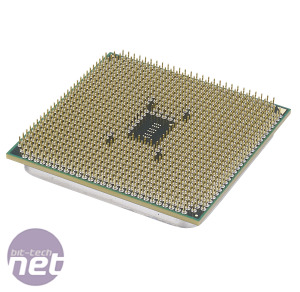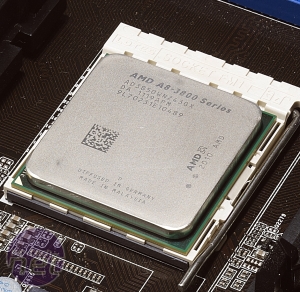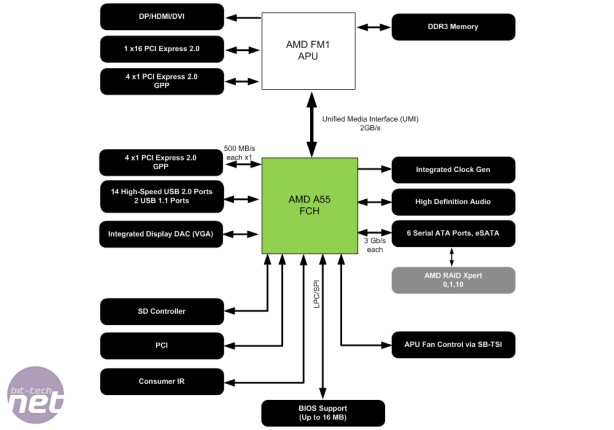AMD A8-3850 Review
Manufacturer: AMDUK price (as reviewed): TBC
US price (as reviewed): $135 (ex VAT) MSRP
AMD A8-3850 Review
Earlier this month AMD launched its first line of Llano-based A-series APUs (accelerated processing unit); the company’s fusion of its K10 CPU architecture with a Radeon GPU on a single chip.Unfortunately, though, for those considering a Llano self-build, this first launch, with parts codenamed Husky, was aimed at laptop manufacturers and PC manufacturers. As such, anyone wanting to build a Llano-based desktop themselves has had to wait to get their hands on AMD’s new processors. This wait is now over, however, as today sees the official launch of the desktop versions of AMD’s Llano-based A-series APUs, codenamed Lynx.
Like the low-power Brazos-based E-series APUs that AMD launched in February this year, the Lynx APUs mark a change of strategic direction for AMD towards a more integrated approach. To this end, AMD claims that the A-series is the first range of processors to offer a competent on-board graphics processor alongside a quad-core CPU, hopefully meaning that the market can dispense with the invariably woeful low-end GPUs that find their way into office and budget PCs.
Click to enlarge
AMD plans to start this revolution with the four APUs that it launches today, which are split over two ranges - the A8-series and the A6-series. The two series are differentiated by both their CPU clock speeds and their on-board GPUs; the pair of A8 processors sport a Radeon HD 6550D GPU with 400 stream processors, while the A6-series chips have a Radeon HD 6530D GPU with 320 stream processors. As well as having a higher number of stream processors, the HD 6550D GPU inside the A8 processor also runs faster, with a core frequency of 600MHz as opposed to the 443MHz HD 6530D found in the A6-series.
The range is further divided by different CPU clock speeds. The two quad-core APUs at the top of the A8- and A6-series, the A8-3850 and the A6-3650, run at a frequency of 2.9GHz and 2.6GHz respectively (although they clock down via Cool‘n’Quiet when idle), and boast a rather hefty 100W TDP to match.
Click to enlarge
The two more junior members of the range, the A8-3800 and the A6-3600, also support AMD’s Turbo Core technology, meaning that their clock speeds will adjust dynamically depending on the demands placed on them. The A8-3800 runs at a frequency of 2.4GHz, increasing to 2.9GHz with Turbo Core enabled, while the A6-3600 runs at a frequency of 2.1GHz and rises to 2.4GHz with Turbo Core. Both of these lower-end APUs also have a much lower TDP of just 65W.
The CPU cores that provide this disparity are based on the rather grandly titled Stars core design, although this is really just a tweaked 32nm version of the 45nm Phenom II core. This means that the CPU at the centre of the AMD’s new APU is still based on the old K10 architecture, which has fared poorly against Intel’s competing Core architecture in the past.
However, a feature that AMD’s Lynx APUs offers over the competing chips from Intel is memory compatibility. Each of the A-series processors will be compatible with DDR3 memory running at up to 1,866MHz, rather than the 1,333MHz memory that Intel’s budget CPUs need. As this memory is shared between the APU’s CPU and GPU, this could offer an easy route to increased graphics performance simply by using faster memory.
The Llano architecture also includes a dedicated Unified Video Decoder (UVD), enabling the APU to offload video playback from both the CPU and GPU, and without the reliance of DirectX Video Acceleration (DXVA).
To complement the launch of the A8 and A6 series of APUs, AMD is also releasing a pair of motherboard chipsets - the A55 and A75. Each will support RAID and hard disks of more than 2.2TB in size, but the premium A75 chipset also provides six SATA 6Gbps ports and four USB 3 ports.
AMD Lynx Family APU Specifications
| AMD A8-3850 | AMD A8-3800 | AMD A6-3650 | AMD A6-3600 | |
| CPU | ||||
| Cores | 4 | 4 | 4 | 4 |
| Turbo Core | No | Yes | No | Yes |
| CPU Frequency | 2.9GHz | 2.4GHz | 2.6GHz | 2.1GHz |
| Turbo Core Frequency | NA | 2.7GHz | NA | 2.4GHz |
| TDP | 100W | 65W | 100W | 65W |
| Packaging | Socket FM1 | Socket FM1 | Socket FM1 | Socket FM1 |
| GPU | ||||
| Stream Processors | 400 | 400 | 320 | 320 |
| GPU Frequency | 600MHz | 600MHz | 443MHz | 443MHz |
| GPU Layout | 5 SIMD Engines | 5 SIMD Engines | 4 SIMD Engines | 4 SIMD Engines |
| Rasterisers | 1 | 1 | 1 | 1 |
| Tessellation Units | 1 | 1 | 1 | 1 |
| Texture Units | 20 | 20 | 16 | 16 |
| ROPs | 8 | 8 | 8 | 8 |
| Typical Street Price | £TBC | £TBC | £TBC | £TBC |

MSI MPG Velox 100R Chassis Review
October 14 2021 | 15:04












Want to comment? Please log in.